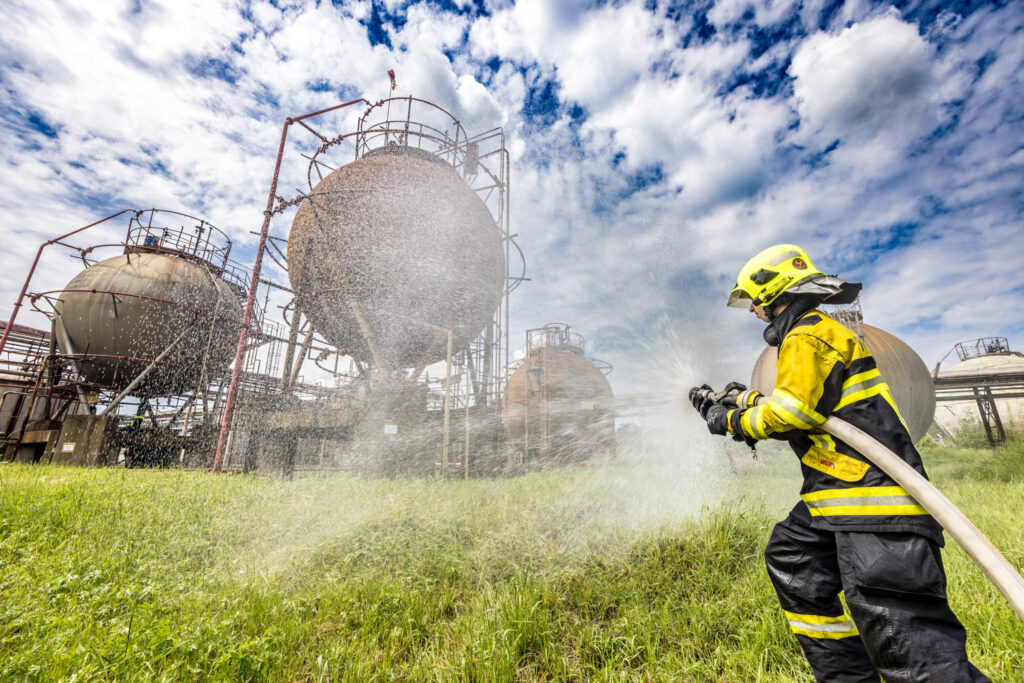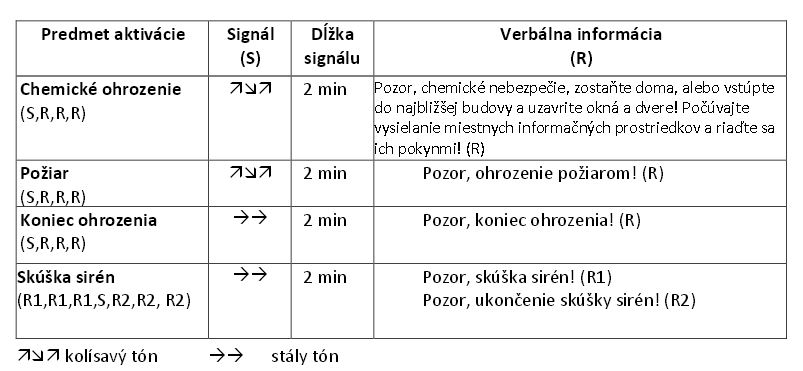Prevention of BPH
FORTISCHEM a. s. is aware that its activities have an impact on the surrounding area. However, we do everything possible to reduce these negative impacts. We take care of occupational health and safety, environmental protection and accident prevention. To ensure the safety of employees and the public in the company’s surroundings, we have adopted the “FORTISCHEM a. s. Major Industrial Accident Prevention Programme”.
To ensure the fulfilment of these objectives, the top management of FORTISCHEM a. s. accepted:


Testing of the operability of warning systems with a 2-minute constant siren tone is carried out in accordance with the specification of the Ministry of the Interior of the Slovak Republic. Radio, TV and press inform about the regular siren function tests and other tests outside this period!
Warning to the population
Warning of the population and notification of persons in the threatened area after the occurrence of an emergency or before the imminent possibility of its occurrence shall be carried out by means of commanded signals.
The sounding of the warning signal will be followed by information about the specific type of emergency and the recommended behaviour of the population. In this case, it is also necessary to listen to the announcements of the municipal radio or other available means of communication. The following generally applicable principles should be observed for self-protection:
- remain calm, act with discretion, do not panic
- to follow the instructions of the rescue workers, municipal and state administration authorities
- warn others at risk
- leave the area at risk immediately, if possible
- before leaving the premises, stop open flame activity, switch off electrical and gas appliances
- to protect themselves according to each type of accident and to protect other persons according to their capabilities and abilities
What to do in case of an accident
Fire
- leave the fire area quickly and do not stay in the area at risk
- seek shelter in buildings, close windows and doors, turn off ventilation
- await further instructions from the competent authorities
Blast
- not to remain in the immediate vicinity of the accident site and to move away to a safe distance
- seek shelter in buildings, close windows and doors, turn off ventilation
- await further instructions from the competent authorities
Leakage of a hazardous substance
I.) WHEN STAYING IN THE BUILDING
- stay in the building and remain in a room facing away from the wind direction and with as few windows as possible, or take shelter in a shelter (if available)
- create an insulated enclosed space – close and seal windows, doors, vents, shut off air conditioning (tape over leaks, seal larger leaks with cloths soaked in water and detergent)
- Prepare improvised protection for the respiratory tract, eyes and exposed parts of the body
- monitor local information reporting, do not underestimate the risk
- only make emergency calls, don’t overload the phone lines
- keep your cool and calm
- only leave the building when instructed to do so by the competent authorities
II.) WHEN STAYING OUTSIDE THE BUILDING
- Keep your wits about you, orient yourself to the situation and leave the area threatened by the hazardous chemical immediately,
- leaving the area depends on the direction of the wind spreading the hazardous substance from the source and your position – always escape from the endangered area perpendicular to the wind direction,
- if you are in the direction of the wind and are in time pressure, seek shelter in buildings immediately and proceed as if staying indoors.
It is very important to seek shelter as quickly as possible. This is true for everyone – at work, at home, at school. Children stay in school where they will be sufficiently informed. If the warning reaches you in a car, leave the car (if possible, park the car so that it does not obstruct the road) and seek shelter as quickly as possible.
Seek shelter means to stay at home, if you are in close proximity to home, return home or enter the nearest building (apartment building, store, office).
Improvised respiratory protection
The most appropriate way to protect the mouth and nose is to cover these parts with a piece of flannel or terry towel slightly moistened in water, aqueous soda or citric acid solution.
Evacuation
It is done at the behest of the emergency services. In this case, shut off the gas, water and electricity supply, prepare and take the essentials with you (documents, valuables, medicines) and make sure the neighbours know they have to leave.